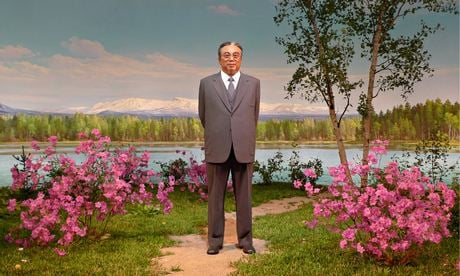Art & Exhibitions
Wax Statues of Kim Jong Il And His Father Are Worshipped in North Korea


Sarah Cascone

Madame Tussauds Wax Museum in Times Square may be seen as a tourist trap by savvy New Yorkers, but wax statues of political leaders by Chinese waxwork master Zhang Molei are held in reverence by the people of North Korea, reports the Guardian.
In Zhang’s native China, even politicians enjoy a carefree photo op with a carefully-crafted facsimile of a historic leader, pop star or other celebrity. It’s a completely different story in North Korea, where no one would dare be photographed with the models of Kim Il-sung and Kim Jong-il, the country’s deceased leaders.
According to Zhang, citizens are brought to tears at the sight of the statues created by him and his team. “For North Korean people it’s like being close to a god,” he told the Guardian. “They respect the figures in the way they would respect the actual person; it’s not just a piece of art. Even senior officials keep a distance of at least 1.5 meters. No one would touch their clothes or hair.”
They offer a photo opportunity of sorts, but picture-taking is carefully monitored. Every photo is taken from the same vantage point so as to show the statues at the best angle, and you certainly can’t be in it.
Zhang got into the waxwork game after a visit to Madame Tussauds left him unimpressed by their statue of Mao Zedong. He decided the Chinese needed to take matters into their own hands if they wanted their most important figures rendered in wax.
His Great Man Waxwork Museum depicts many key Chinese political leaders in realistic, if larger-than-life fashion. (Zhang claims the added height allows his statues to be better viewed at a distance, though propaganda concerns likely play into the decision.)
Eventually, North Korea got wind of his work, and in 1994 Pyongyang officials enlisted Zhang to create a waxwork of the recently deceased Kim Il-sung. The work was carefully overseen (he describes official briefings “detailed to a degree you cannot imagine”), and a specially outfitted team of escorts in black suits and white gloves transported the finished work to the North Korean capital.
The piece was well-received, and a follow-up commission called for a matching statue of Kim Il-sung’s wife. Even though there were only a few blurry photographs and one sculpture of the mother of Kim Jong-il on which to base the likeness, “we tried to make it like the image of her in people’s hearts,” says Zhang.
When Kim Jong-il died in 2011, North Korea once again called on Zhang’s services, but the project was almost cancelled when the artist insisted that the statue should include at least some of the late leader’s many liver spots. Ultimately his son, Kim Jong-un, agreed that some of the unflattering spots should be added to the work.